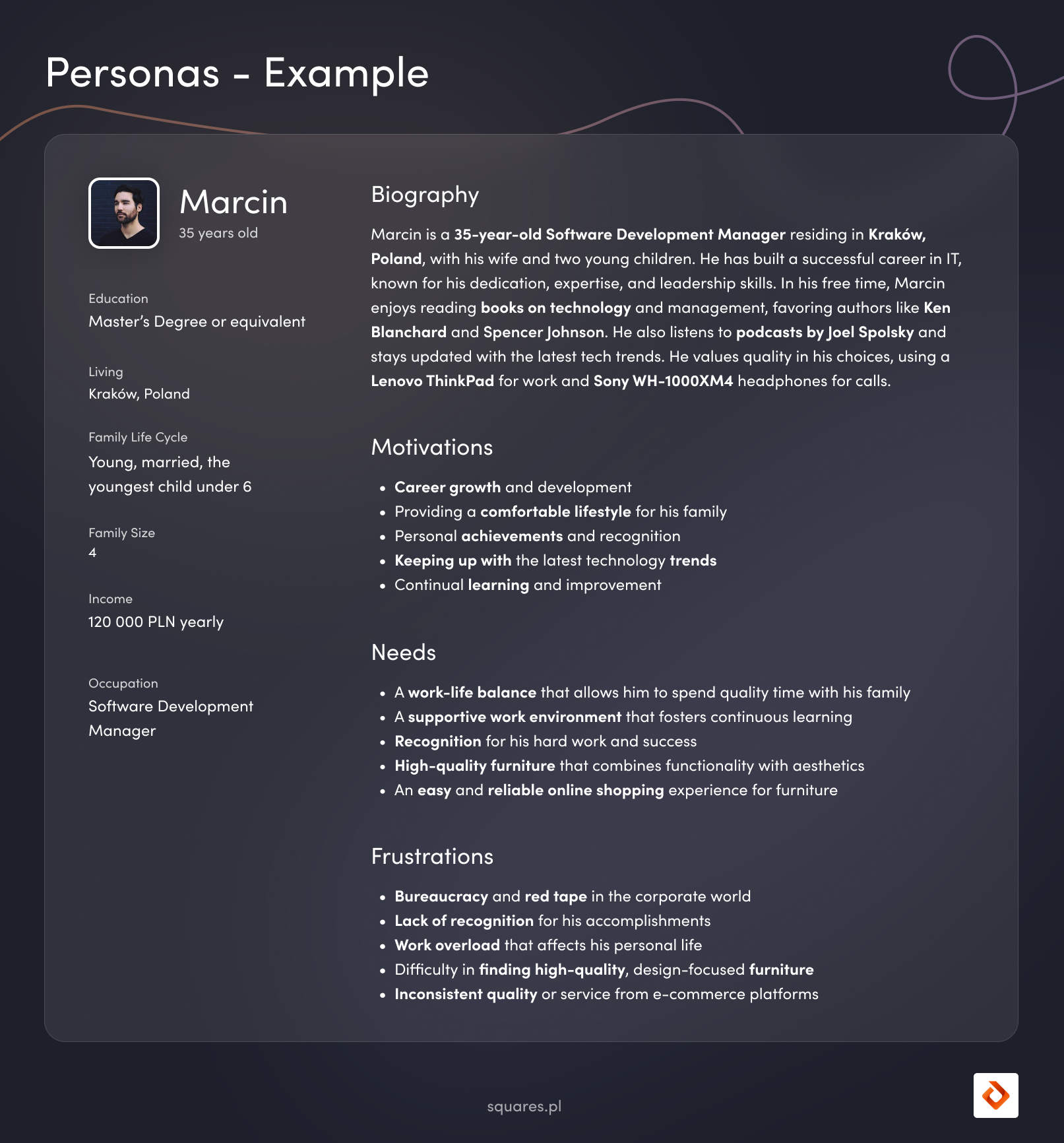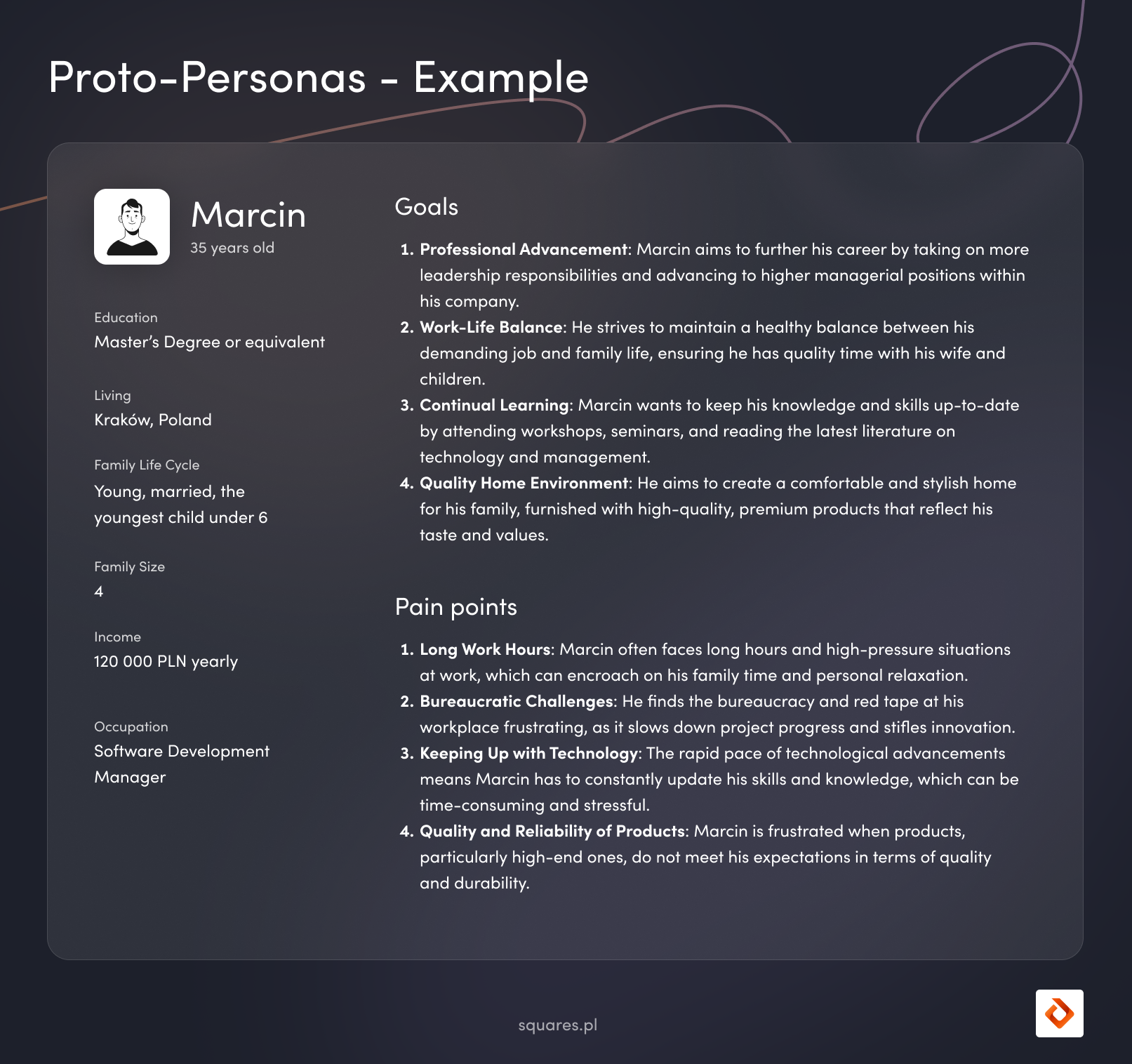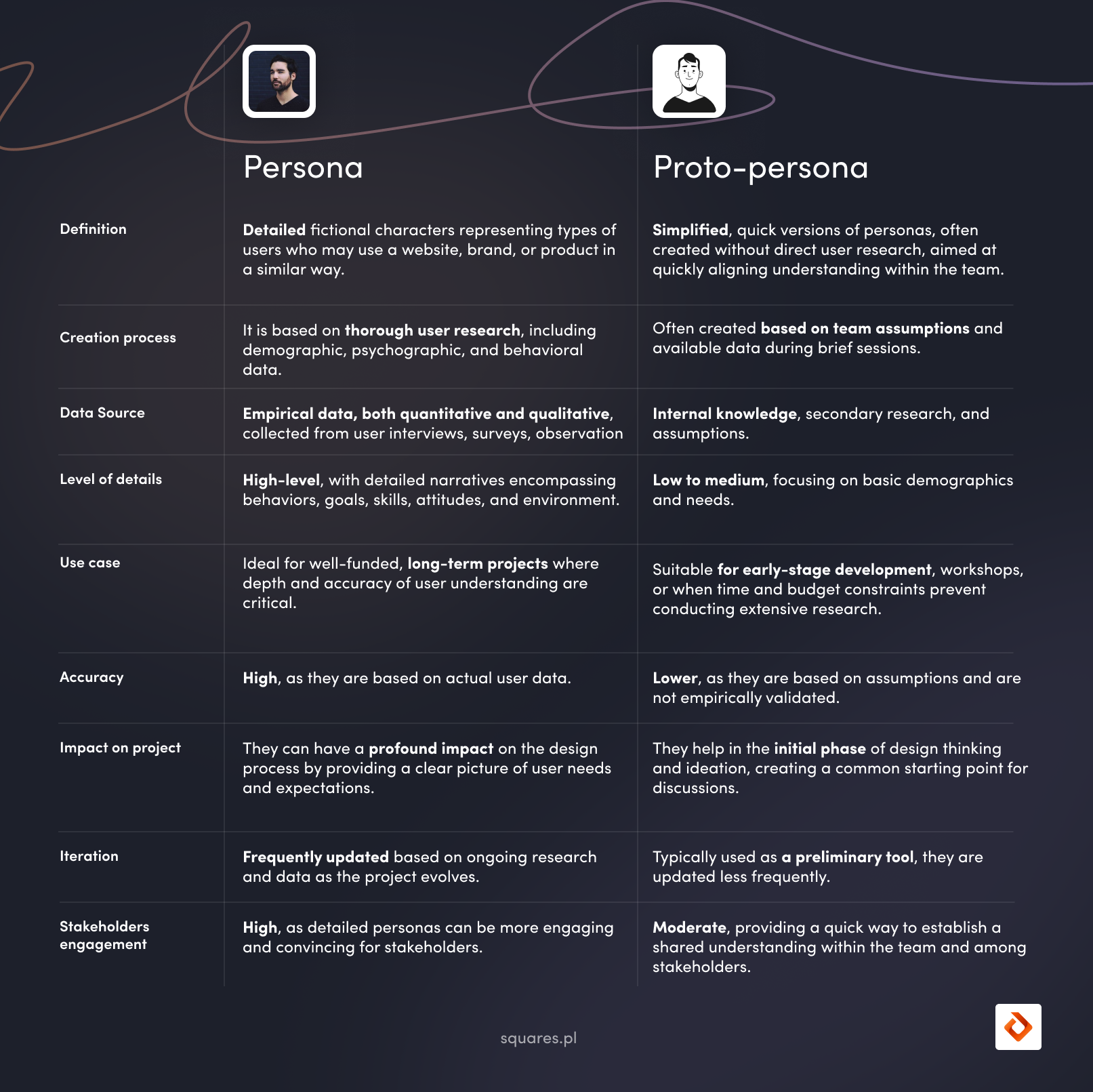Personas and Proto-personas – What Are They and When to Use Them?

Personas or Proto-Personas are key tools in User Experience (UX) design that help creators understand and anticipate user needs. This article focuses on explaining the similarities and differences between these two approaches, highlighting their importance in the design process and how they can be utilized to create more empathetic and effective projects.
In the world of UX, understanding and predicting user needs and behaviors is crucial. Personas and proto-personas are two tools that play a fundamental role in this process. While they are often used interchangeably, there are significant differences between them that can impact the design approach and the final product. In this article, we will explore what personas and proto-personas are, their main characteristics, similarities, and differences, and how they can be applied in practice.
What are Personas?
Personas are detailed profiles of fictional users created based on thorough research. They not only describe demographic information but also include behaviors, needs, goals, and expectations of users. Personas help designers and product teams better understand and empathize with the users they are designing for.

What Should Personas Include:
- Demographic Data: Age, gender, location, education, occupation.
- Background and Context: Professional and personal history, hobbies, values.
- Goals and Tasks: What does the user want to achieve by using the product? What are their priorities?
- Motivations: What drives the user? What inspires them?
- Pain Points and Challenges: What difficulties does the user encounter? What obstacles do they face?
- Behaviors: How does the user interact with similar products? What are their habits?
What are Proto-Personas?
Proto-personas, on the other hand, are a quick and intuitive tool for creating preliminary user profiles. They are often developed in the early stages of design, based on assumptions and available information before thorough research is conducted. Proto-personas allow for a fast visualization of a potential user, which is especially useful in dynamic environments where time and resources are limited.

What Should Proto-Personas Include:
- Basic Demographic Data: Age, gender, general life status information.
- Assumed Behaviors: Predicted user habits and how they interact with products.
- Potential Needs and Goals: Estimated goals that users may have.
- Presumed Motivations: Speculated motivations and factors influencing user decisions.
- Predicted Challenges: Hypothetical challenges that the user might encounter.
Personas vs. Proto-Personas – Comparison
The similarities between personas and proto-personas lie in their fundamental role, which is to understand and represent users in the UX design process. Both tools help visualize user specifics, supporting a more empathetic approach to design.
However, the differences are significant. Personas are based on detailed research, making them more accurate and precise. In contrast, proto-personas are based on assumptions and readily available information, which makes them quicker to create but less reliable.

How to Use Personas and Proto-Personas?
In the design process, both personas and proto-personas can be incredibly useful. These tools enable the identification of key users, define their characteristics, and help prioritize product or service features. Creating realistic user scenarios becomes easier when you have accurate personas, which also facilitates prototype testing and gathering valuable feedback.
By using personas and proto-personas, design teams are able to create more user-centric and empathetic designs, ultimately leading to better user experiences.


